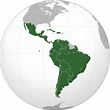 Nearly 9 out of 10 Latin Americans will live in cities by 2050. A report issued in 2014 by the United Nations Human Settlements (UNHS) program has suggested that the current economic stability and slower population growth should be used to make the cities more equitable. Already 8 out of 10 people live in cities – but the move to urbanization was accompanied by deep social inequalities, caused in part by poor planning, a deteriorating environment, and the high speed of the change. Urban explosion can be benefit from judicious and target impact investment in projects that enable urban expansion by inclusive communities, which helps poverty levels drop, as indigence in urban areas is reduced through community networks, and as unemployment figures are contained with local jobs.
Nearly 9 out of 10 Latin Americans will live in cities by 2050. A report issued in 2014 by the United Nations Human Settlements (UNHS) program has suggested that the current economic stability and slower population growth should be used to make the cities more equitable. Already 8 out of 10 people live in cities – but the move to urbanization was accompanied by deep social inequalities, caused in part by poor planning, a deteriorating environment, and the high speed of the change. Urban explosion can be benefit from judicious and target impact investment in projects that enable urban expansion by inclusive communities, which helps poverty levels drop, as indigence in urban areas is reduced through community networks, and as unemployment figures are contained with local jobs.
There are 16,000 cities, of which eight are megalopolises each with more than 5 million people. Nonetheless, some 111 million people out of a total of 588 million still live shanty towns - in precarious conditions, segregated socially and spatially, with limited access to basic services or jobs. The cost to society of marginalized people is high; by changing the social dynamic new clients and markets are created.
Rethinking urban environments in Latin America is critical for several reasons, not least because of the very high prevalence of asthma among urban dwellers. This may be because of the growth of urbanization and may also be linked to a greater sensitivity to asthma among Hispanics, although studies on this are not conclusive.
UNHS, the Inter-American Development Bank, USAID, and other donors are focused on building resilient and sustainable cities in Latin America. The private sector has a huge role to play, through direct and impact investing, and there is major scope for a change in how development is approached. Fiber optic cable run through the Amazon will open up major areas of the continent to high speed internet, micro-grids will become available to power remote areas, and drone technology may also provide ways to bring critical goods and services to and from more remote mountain areas.
